The Essential Five: Steps to Kickstart Your Organic Garden
Embarking on the journey of organic gardening is not just about growing food; it's a commitment to sustainability, health, and harmony with nature. Whether you're a seasoned gardener looking to transition to organic practices or a beginner eager to cultivate your green thumb, these five fundamental steps will set you on the path to a thriving organic garden.
Soil Preparation: Lay the Foundation for Success The cornerstone of organic gardening is healthy soil. Start by testing your soil's pH and nutrient levels. Amend it with organic matter such as compost, aged manure, or shredded leaves to improve its structure, fertility, and moisture retention. Avoid synthetic fertilizers and pesticides, as they can disrupt the delicate balance of soil life. Instead, focus on nurturing the soil ecosystem, fostering beneficial microbes, worms, and other organisms that contribute to plant health.
Plant Selection: Choose Wisely for Your Climate and Space Selecting the right plants is crucial for a successful organic garden. Research varieties that are well-suited to your climate, soil type, and available sunlight. Opt for disease-resistant and heirloom varieties whenever possible to promote biodiversity and resilience. If space is limited, consider compact or dwarf varieties and utilize vertical gardening techniques like trellising and hanging baskets. Remember to rotate your crops annually to prevent soil depletion and pest buildup.
Natural Pest Management: Work in Harmony with Nature Embrace integrated pest management (IPM) strategies to keep harmful insects and diseases at bay while minimizing environmental impact. Encourage natural predators such as ladybugs, lacewings, and birds by providing habitat. Stay away from pesticides. Practice companion planting to deter pests and attract beneficial insects. Employ physical barriers like row covers and netting to protect vulnerable crops, and handpick pests when necessary. Vigilance and early intervention are key to preventing pest infestations from escalating.
Water Conservation: Conserve Every Drop Efficient water management is essential for sustainable gardening, especially in regions prone to drought or water scarcity. Mulch your beds with organic materials like straw, shredded bark, or grass clippings to suppress weeds and retain moisture. Water deeply and infrequently to encourage deep root growth and resilience to dry conditions. Consider installing drip irrigation or rainwater harvesting systems to minimize water waste and reliance on municipal supplies. Monitor soil moisture levels regularly and adjust watering frequency as needed based on weather conditions and plant requirements.
Continuous Learning: Cultivate Curiosity and Adaptability Organic gardening is a journey of discovery and lifelong learning. Stay curious, observe your garden closely, and learn from both successes and failures. Keep abreast of the latest research, trends, and best practices in organic agriculture through books, online resources, and gardening communities. Experiment with new techniques, crops, and varieties to expand your knowledge and repertoire. Above all, approach gardening with patience, humility, and respect for the intricate web of life that sustains us all.
Starting an organic garden is not just about growing food; it's a transformative act of nurturing life, fostering resilience, and sowing the seeds of a healthier, more sustainable future. By following these five essential steps—building healthy soil, selecting the right plants, practicing natural pest management, conserving water, and embracing continuous learning—you'll not only reap a bountiful harvest but also cultivate a deeper connection to the natural world and your own well-being. Happy gardening!
Organic Starter Plants - Scheduled delivery to Choices May 7th
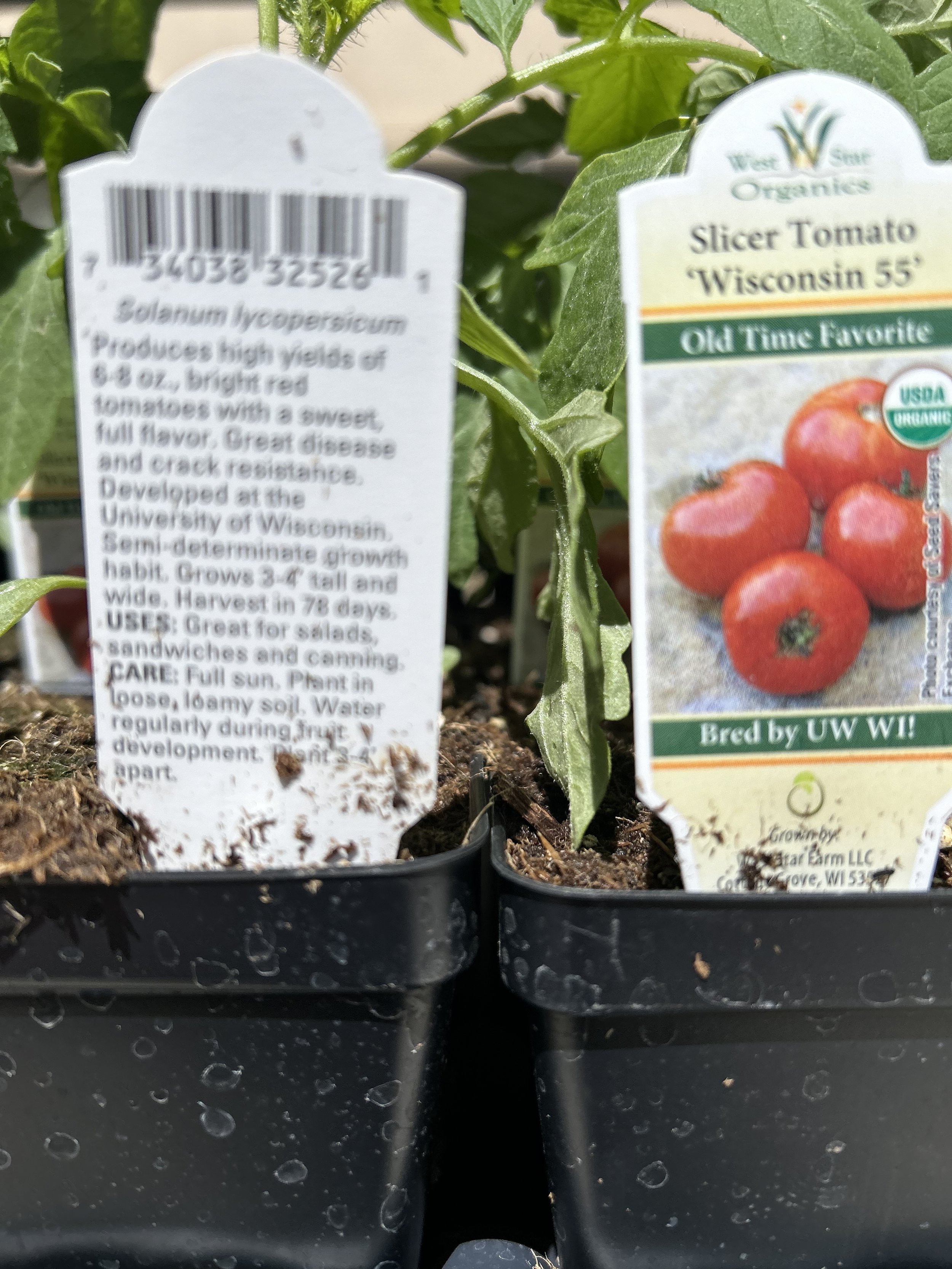
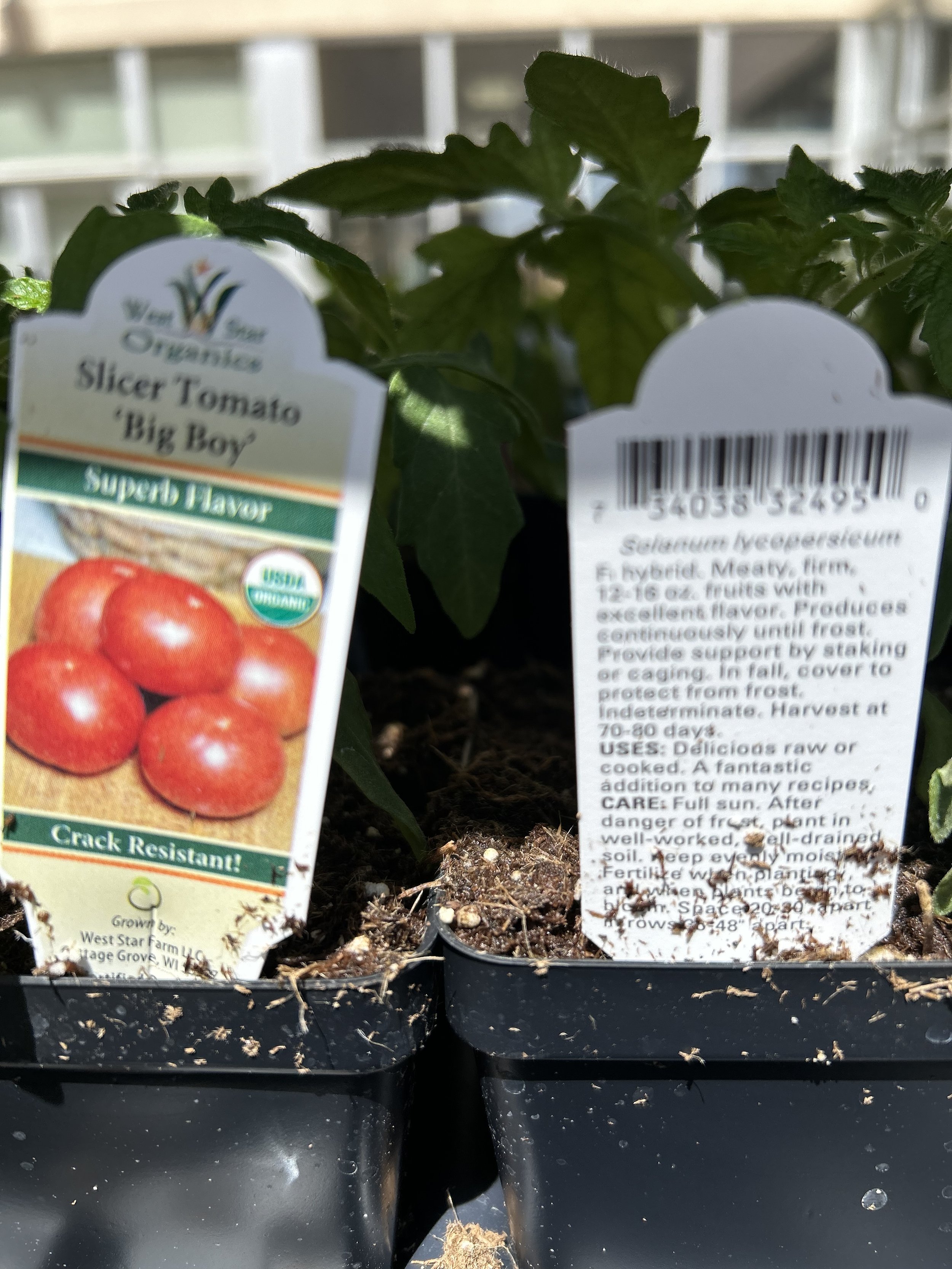
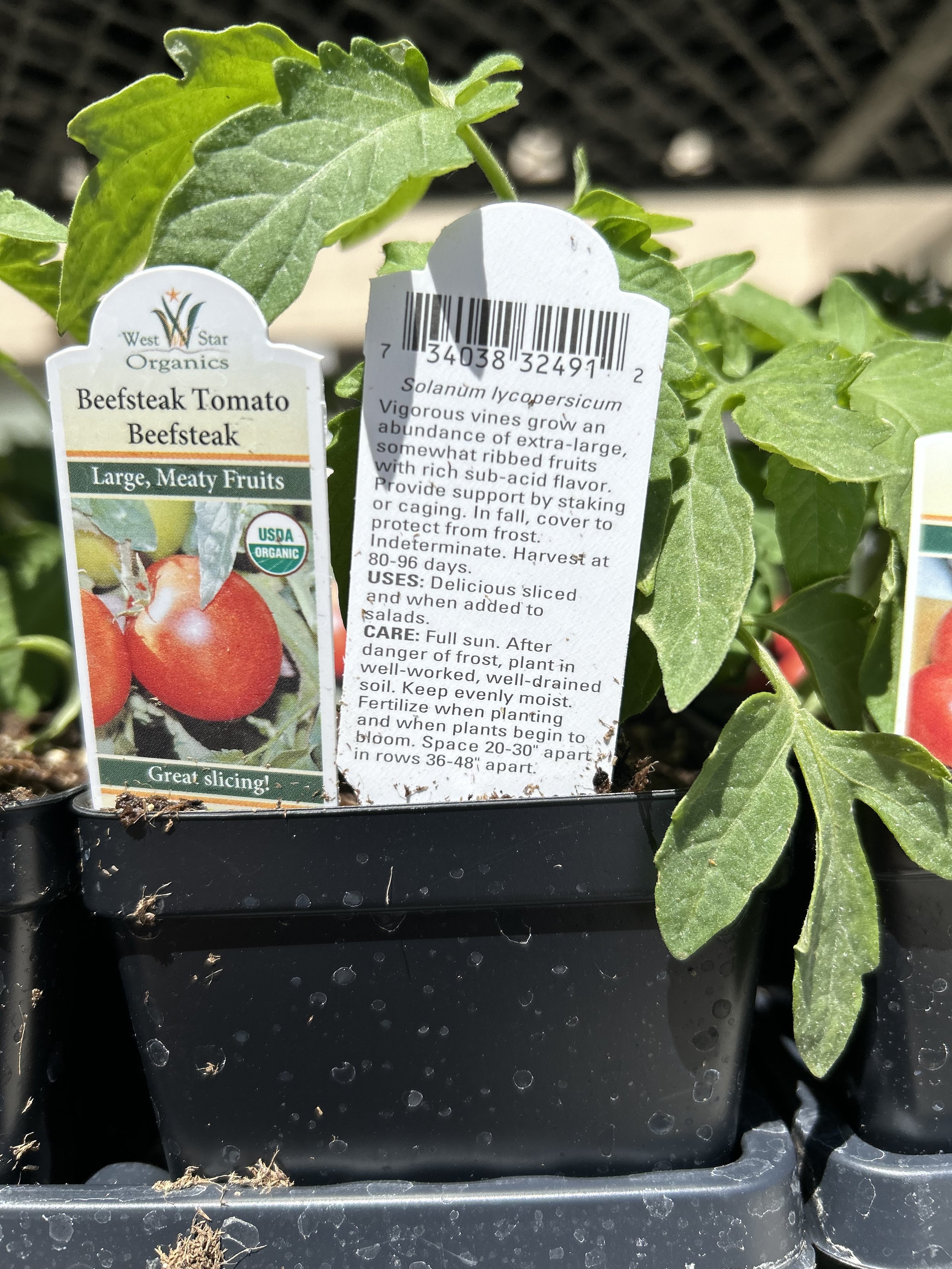
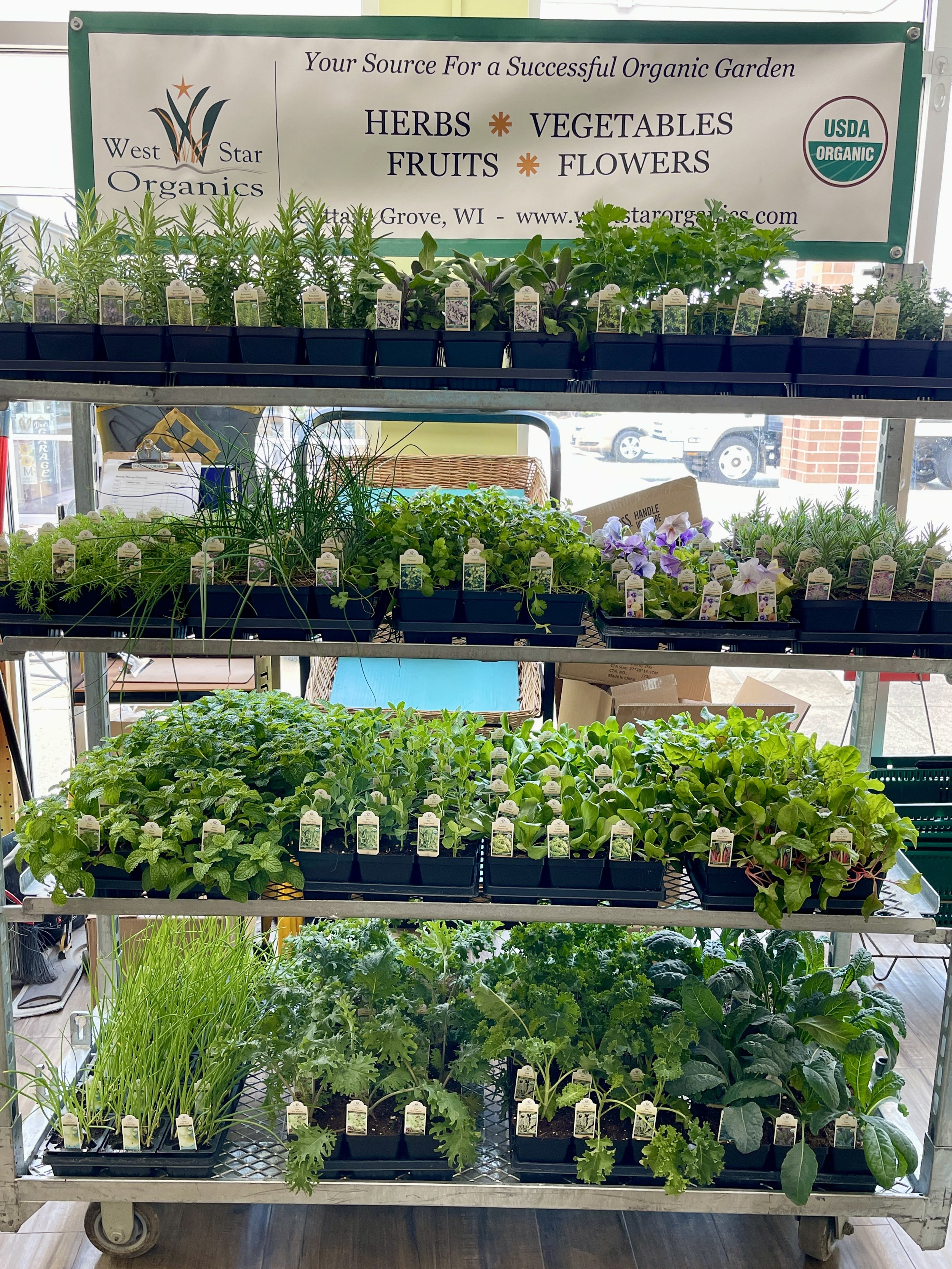
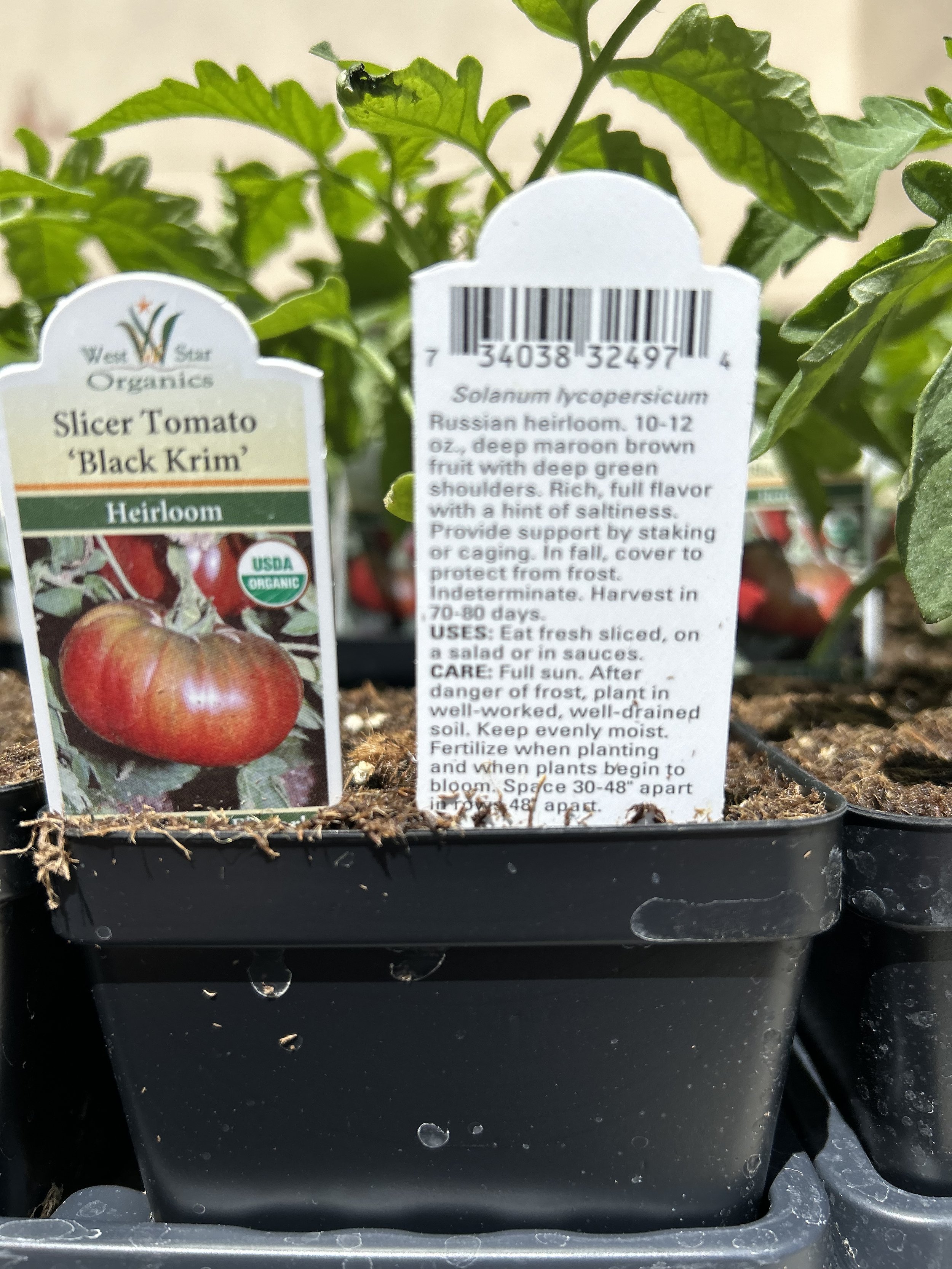
New plants scheduled for delivery this week:
Herbs:
Basil Genovese: Annual; Sweet. Green pesto; dark green leaves - all purpose basil
Basil Prospera Red: Annual; Dark purple, medium size leaves
Mint Doublemint: Perennial; Spearmint-type, known as "the best"
Oregano Greek: Perennial; Strong aroma and flavor; great for pizza and Italian cooking
Thyme English: Perennial; True, robust, thyme flavor
Veggies
Broccoli: Large uniform heads, tall stems, summer harvest
Brussels sprouts: Evenly sized sprouts on long stalk; main season maturity
Cauliflower: Snow white heads. Gorgeous dense, well-filled curds
Sugar Ann snap peas: Sweet, uniform crops of delicious, 2–2 1/2" long peas
Squash Waltham Butternut: (Winter) Delicious, finely textured dark orange flesh
Lettuce Green Towers Romaine: Tall, dark green, disease tolerant
Tomatoes
Early girl plus: (Slicer) Meaty, ripe, early, red fruits, 4 to 6 oz
Celebrity plus: (Slicer) 8 oz fruits, great flavor, disease resistance
Super Sweet 100: (Cherry) Round 1oz fruits are sugary sweet
Heirloom Varieties:
Black Krim: (Slicer) Iridescent purple: winner of West Star's taste test
Brandywine: (Beefsteak) Amish heirloom, Huge rosy-pink fruits, great flavor
Ponderosa pink: (Beefsteak) Large heirloom; few seeds; low acidity
San Marzano: (Paste) Italian paste; firm pulp, low seed count; average 4 oz
Striped German: (Slicer) Bicolor red and yellow, marbled interior, fruity flavor
Peppers
King Arthur: (Green to Red Bell) Sweet and crunchy, green or red; 4-lobed
New Ace: (Green to Red Bell) Early-maturing plant produces heavy yields of sweet peppers
Ancho Poblano: Mild; stuffing pepper; dried as ancho pepper; dark green
Cayenne Ring-O-Fire : Long, slender, dries well
Jalapeño : Dark green; large yield; disease resistant
Carolina Reaper: World's Hottest Pepper!
Flowers:: Sunflower Smiley Dwarf: Annual; 6-20" mini sunflower for container and garden use

